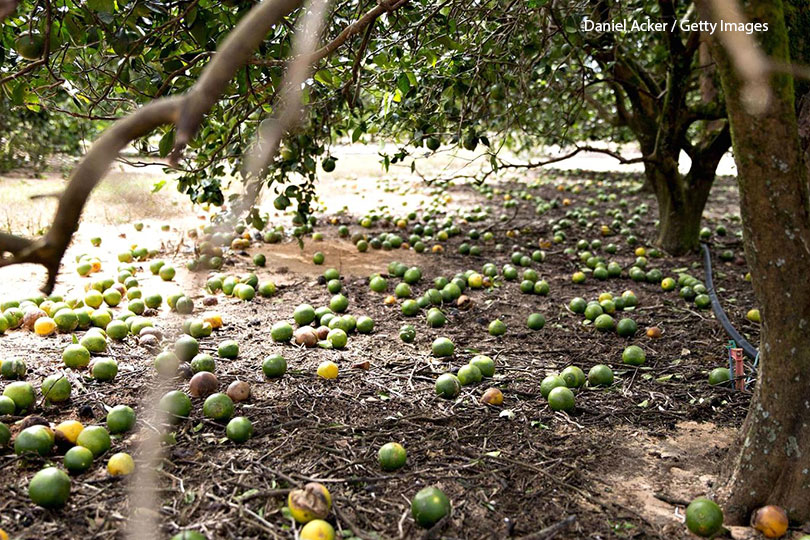By Shala Gean
Communications Specialist
The full impact of Hurricane Irma on Florida’s agriculture is still undetermined, but early informal estimates place the cost of farm losses in the billions of dollars, according to Florida Farm Bureau Federation (FFBF) Director of Public Relations G.B. Crawford.
“We’ve experienced an agricultural disaster here,” Crawford told the Texas Farm Bureau (TFB) Radio Network. “Our farm families are extremely resilient, capable, independent people. They did everything they could to protect their animals, their properties and, of course, their families.”
The entire peninsula suffered major damage, according to Crawford. He said the worst damage was sustained in Southwest Florida counties.
“In some of those areas, citrus growers tell us that 60-70 percent of the fruit on the trees was simply blown away,” Crawford said. “Standing water of up to three feet threatens plant health and productivity in the future.”
These losses raise the likelihood that the 2017-2018 crop will be much smaller than expected.
Crawford noted around 10 percent of Florida’s fall vegetable crop was in the ground when the storm hit. Those farmers who had already planted fall vegetables, including tomatoes, report a near-total loss.
In Hendry and Glades counties, hundreds of sugarcane plants were submerged in water, buried in sediment or blown away. Palm Beach County sugarcane appears to be shredded, but farmers there say that new growth is possible and along with it a partial harvest.
Crawford said Miami-Dade County lost about 40 percent of all farm commodities, and ornamental plant nurseries lost 70 percent or more of their shade cover and structures.
“Even the cut foliage growers as far north as Daytona Beach area have suffered significant damage,” Crawford said.
In east Florida’s Brevard County, ranchers have experienced heavy flooding. There was an estimated 50,000 acres of ranchland underwater, according to a FFBF news release.
“Many of our beef cattle ranchers across the state cannot gather and care for their animals because flooding has isolated sections of their properties,” Crawford said. “It will mean calf weights will drop and profits will drop, as well.”
Dairies in the southern part of Florida lost valuable production time because of electric power grid failures, according to Crawford.
“We have ranchers in north Florida without power, with water problems, with destruction,” Crawford said. “We’ll be counting the losses for weeks to come I’m sure.”
U.S. Department of Agriculture (USDA) Secretary Perdue spent time this week visiting with farmers and ranchers in Florida impacted by Irma.
“We are going to do everything the law allows to be as generous, compassionate and as quick as we possibly can to help you all restore as much as you can,” Perdue told reporters.
Purdue said he will work administratively within USDA to help.
“Our farmers and ranchers show their true strength under the pressures of adversity,” FFBF President John L. Hoblick said in a statement. “I ask all Floridians to join me in applauding their dedication, hard work and willingness to work through very difficult circumstances so that they can continue operations that support us all.”

